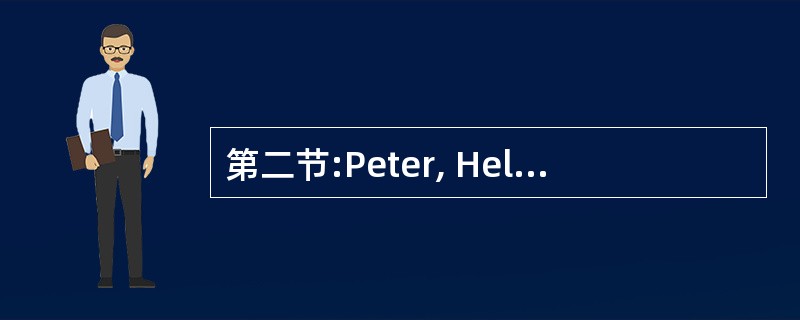第二节:Peter, Helen, Catherine, Elizabeth和Levin 想根据各自在环保方面的兴趣(61-65)进行案例研究。阅读下面某杂志的专题报道摘要(A、B、C、D、E和F),选出适合他们研究的最佳案例,并在答题纸上相应选项的标号涂黑。选项中有一项是多余选项。
61. Peter: Reducing plastic and other wastes through DIY.
62. Helen: Making use of the heavy traffic to produce electricity.
63. Catherine: Building a community without private cars
64. Elizabeth: Building houses with recycled materials and energy-efficiency systems
65. Levin: Disvoering a new type of urban car which burn which burns less gas
A.
B.
Vauban
We know cars are terrible polluters, but would you give yours up? Vauban, a community in southwestern Germany, did just that, and its 5,000 citizens are doing fine. Most streets are of vehicles, and there are generous green spaces and good public-transport lines, including fas uum and bicycle paths. When people must drive, they can turn to car-sharing clubs. “All the citizens had the chance to plan their own city,” says Andreas Dellexe, an energy expert, “and it’s just bow we wanted it to be.”
D.enmark
D.uring the period of gas shortage in the early 70s, Denmark decided to become self-sufficient(自足). So they began a few projects making smart investments along the way.
On the island of Satosoc, local families, fishermen and farmers bought wind turbines(涡轮机) to produce their own energy, Within seven years these turbines were completely paid for. And can you believe just one of wind turbines produces enough electricity for 600 households?
C.
D.
Trey Parker and Matt Stone
Trey Parker and Matt Stone, creators of South Park, have built a sustainable(可持续的) castle with outer siding and inner flooring of recycled wood, recycled carpeting, high-efficiency boiler systems.
I think more and more today, people are willing to make a statement about the Earth and how they want to protect it,” Michael Ruth, home designer and builder says. “For high-end homes in this valley, this is entirely consistent with what they cost.”
P-NUT
Who doesn’t love the name P-NUT—short for Personal-Neo Urban Transport? It’s Honda’s latest attempt to create a tiny footprint for a new urban vehicle.
This little P-NUT is unique. With a central driving position, the car is designed to move in tight settings. The 11-foot micro car will sent three with two rear-seat passengers behind the driver.
“The P-NUT concept explores the packaging and design potential for a vehicle designed for the city lifestyle.” Said Dave Marek, a Honda design spokesman.
E.
F.
Israel Company
Is it possible that annoying rush hour traffic could become a source of renewable energy?
Israel’s Technion Institute of Technology claims that if we placed special generator(发电机) under roads, railways, and runways—we could harvest enough energy to mass-produce electricity. A trial process has been used on a smaller scale, in dance clubs for instance, where the pounding feet of dancers light up the floor.
“We can produce electricity anywhere there is a busy road using energy that normally goes to waste,” said Uri Amit, chairman of Israel’s Technion Institute of Technology.
C.offee
C.offee. Some of us can’t start our day without it, and we don’t mind waiting 10 minutes in line for it.
H.ere is the most effective tip to make you a superstar in environment protection.
G.et a coffee machine for your home or coffee, or persuade your company into buying one. (Tell them it will improve productivity.) Skip the coffee line on the way to work and make something that is better-tasting and much better for your wallet.
Plus, you won’t need those plastic cups or carrying cas that just get thrown away. Better yet, use your favorite c mug.
参考答案与解析:
-
相关试题
-
第二节:(30分) Star Student of the Week
-
[试题]第二节:(30分)Star Student of the Week
- 查看答案
-
猫截爪术中应该截断第几节指趾骨( )A、第一节B、第二节C、第三节D、第二节和第
-
[单选题]猫截爪术中应该截断第几节指趾骨( )A.第一节B.第二节C.第三节D.第二节和第三节E.都可以
- 查看答案
-
《国际海上避碰规则》第二章第二节、三节各条规定________。
-
[单选题]《国际海上避碰规则》第二章第二节、三节各条规定________。A.适用于分道通航制区域B.不适用于分道通航制区域,因为在该区域已制定有“分道通航制”规则C.A、B都对D.A、B都不对
- 查看答案
-
拇指第一与第二节之间的关节属于()
-
[单选题]拇指第一与第二节之间的关节属于()A.掌指关节B.腕掌关节C.桡腕关节D.腕骨间关节E.手指间关节
- 查看答案
-
第二节: Bryan、Olga、Scott、Anna 和David正在进行一项“
-
[单选题]第二节: Bryan、Olga、Scott、Anna 和David正在进行一项“企业家成功秘诀调查”。他们将采访几位企业家。第61-65题是他们拟定的采访话题。阅读下面刊登在Entrepreneur(《企业家》)杂志上6位企业家的成功感言(A.B.C.D.E和F),为每位采访者选定最佳采访对象,并在答题纸上将该选项标号涂黑。选项中有一项是多余选项。61.Bryan: What comes first, the customer or the profit?62. Olga: How import
- 查看答案
-
在某分道通航制区域,《国际海上避碰规则》第二章第二节、三节各条规定:()
-
[单选题]在某分道通航制区域,《国际海上避碰规则》第二章第二节、三节各条规定:()A . 如果国家主管机关制定了有关该分道通航制的特殊的规定,则不适用B . 不适用于分道通航制区域,因为在该区域已制定有“分道通航制”规则C . 如果IMO采纳了该分道通航制,则适用D . 如果该分道通航区域处于规则适用水域,则适用
- 查看答案
-
下列说法中,哪些是不正确?()①除《国际海上避碰规则》第二章第一节和第二节另有规
-
[单选题]下列说法中,哪些是不正确?()①除《国际海上避碰规则》第二章第一节和第二节另有规定外,追越船应给被追越船让路;②任何情况下,只要一船从另一船的正横后大于22.5度方向上赶上他船,就必须给他船让路;③不论《国际海上避碰规则》第二章第二节和第三节如何规定,追越船均应给被追越船让路。A.②B.①②C.②③D.①②③
- 查看答案
-
我国水表产品型号的组成中第二节字母的含义?
-
[问答题] 我国水表产品型号的组成中第二节字母的含义?
- 查看答案
-
第二节 书面表达(满分25分) 英语中“please.” “In you”“so
-
[主观题]第二节 书面表达(满分25分)英语中“please.” “In you”“sorry”等礼貌用语具有增进友谊,改善关系、化解矛盾神奇的力量,因而被称为“ ”。请 “Magin Power of Polite Words”为题写一篇100词左右的英语作文。代表裁不限(叙述文评论文说论文……)
- 查看答案
-
下列说法何者不正确?I、除《国际海上避碰规则》第二章第一节和第二节另有规定外,追
-
[单选题]下列说法何者不正确?I、除《国际海上避碰规则》第二章第一节和第二节另有规定外,追越船应给被追越船让路;II、任何情况下,只要一船从另一船的正横后大于22.5度方向上赶上他船,就必须给他船让路;III、不论《国际海上避碰规则》第二章第一节和第二节如何规定,追越船均应给被追越船让路A.IIB.I、IIC.II、IIID.I、II、III
- 查看答案
